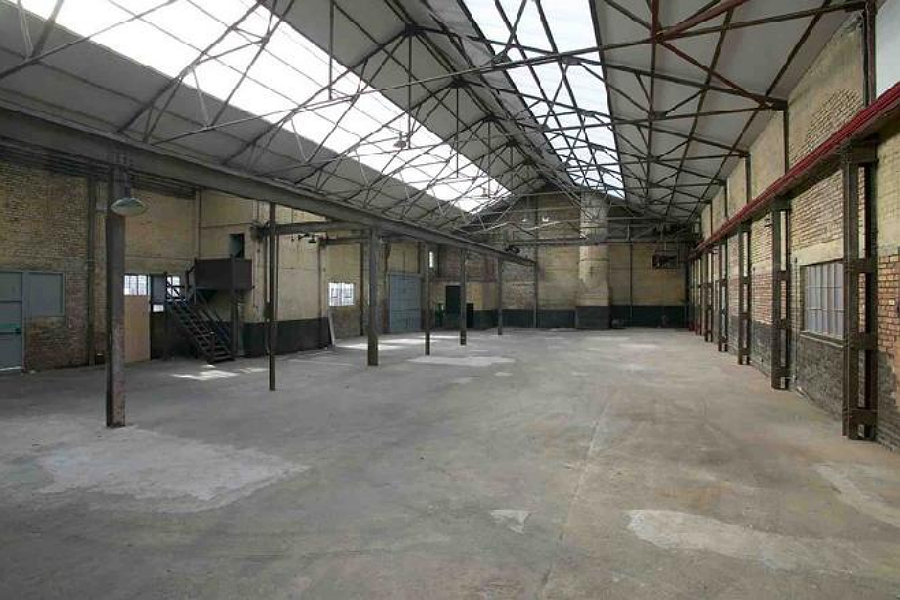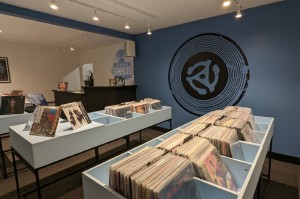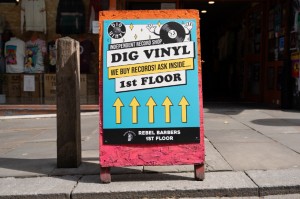A Seismic Shift: 2011 Liverpool Venues in Review

In the second part of a series, Jon Davies considers a year of venues lost and found…
2011 was the first year proper we saw a major change in landscape and venues available to the city. On moving here back in 2007 there seemed to be an embarrassment of riches in venue terms; from the top of the hill to the outskirts of the town centre, huge popular concert spaces from the Philharmonic Hall and the 02 Academy (then Carling) to Mello Mello and Wolstenholme Projects, a music fan could find a half-decent gig almost every night of the week. Since then we’ve seen the closure of Korova, countered by the rise in prominence of the Kazimier, but 2011 has been a turbulent year for finding places to play and see music.
Don’t Drop The Dumbells was my favourite ever venue. Housed on the site of the old Picket, its stay was all too brief. Lovingly created by Jacob Stig along with a number of faces from the city’s underground scene, it provided not only cheap practice spaces for bands such as Barberos and Stignoise Soundsystem, but was an incredibly versatile and friendly environment for a huge range of events. Despite many of these events being semi-legal, or cunningly disguised as film shoots, for a time this was proof of DIY in action. There were even rumours that the crew had managed to secure a long-term contract to run the property outright. I had the satisfaction of putting on a couple shows here, as well as the pleasure of seeing a few great bands coming to town that may otherwise have a limited audience. Amongst them: Kayo Dot, Nathan Bell, Chris Brokaw, Action Beat, Silent Front, and not forgetting some great through-the-night events held with the guys from Upitup. Sadly, by March that was that. Word on the street was that Hope Street Hotels plan to make Liverpool a permanent overnight stay for drunken ‘Cheshirns’ to ruin the city every weekend – we could not possibly comment. It was upsetting to see such an organic process swept aside by the unforgiving onslaught of homogenisation, however for those few months, Liverpool’s underground musicians found a place they could call home.
Two ideas were put forward to remedy a lack of individuality in the Liverpudlian landscape. Firstly, the mixed reception of Eric’s reopening. Eric’s past, as one of the most iconic venues in the UK, playing host to a number of Punk and Post-Punks biggest stars such as Elvis Costello, The Slits and Joy Division, guarantees its legacy. A giant toilet with a PA, it was a popular venue until its closure in 1980 following a drugs raid. Perhaps that’s how it should have stayed, but like most cultural happenings in recent decades, entrepreneurs couldn’t resist the opportunity for reviving a lost artefact of history. John Lynch, managing director of the new Eric’s hoped that his venue would become a platform for the ‘best up and coming acts, signed and unsigned from the local area and further afield’. Very noble, but it’s rare such a convoluted act such as opening an active museum could inspire bands striving to create their own legacy, not off the back of the late 1970s. It’s still early days, but currently their bookings have missed the mark, and the current 2012 listings show just Beth Jeans Houghton as a possible marker of what they could be doing, as opposed to the likes of Altered Images and the forgotten Steve Craddock of… Ocean Colour Scene, ah yes.
Another solution was to come off the back of the recently closed Dumbells in the form of the Urchin Sessions at Warehouse 59, on Jordan Street. Not much has been disclosed as to who they are, what their aim is and how these gigs will offer a new avenue for upcoming talent. Although they have already hosted Rhodes, Dogshow and Loved Ones, the aesthetic of these sessions have been met with an air of cynicism from the DIY scene. Whilst Dumbells was a spontaneous instance in Liverpool’s music scene, a space for friends to see music, book events and rehearse, the Urchin Sessions (an arm of Sound City) opened at a time when the music scene was missing a venue that seemed derelict, one which created a new atmosphere away from the dark, dank rooms with Carling logos emblazoned everywhere. However, Warehouse 59 is not a disused space, rather an underused space surrounded by industrial workshops and sometimes host to revivalist warehouse raves, and Sound City are as far away as you can get from the autonomous dealings of cobbling together old PA systems and makeshift stages. The move seems to be a commercial opportunity to formalise the DIY scene. Music may be their passion, but it’s hardly the labour of love we saw with Dumbells.
Back to the regression, we also saw the Masque and Contemporary Urban Centre announce their closure within days of each other, the former closing all operations without notice. The Masque had been trundling for a good few years, as nothing more than a simulacrum of many other venues across the country, but it’s yet another path closed for promoters hoping to attract international acts who would otherwise circumvent for Manchester. The CUC’s closure was more surprising, if only for the success of Liverpool Music Week’s closing party. It seemed that night would breathe life into an otherwise bewilderingly underused venue; instead it seems that after showcasing their labyrinth of vast halls they would cut their losses, with the Baltic Triangle looking barer every year. However, a new venue may be able to fulfill the promise of the CUC in the coming year…
Following the closure of the A Foundation across the street came Camp and Furnace, which although early in its stages, looks a great addition to Wolstenholme Creative Space and The Royal Standard for versatile art venues in the city. Only time will tell whether C & F can attract the numbers necessary to keep the doors open, and the punters coming through them, but early signs are good.
It’s important for the Liverpool music scene to expand beyond the top of Bold Street, and the other side of the city centre. We’ve seen the reopening of Magnet on Hardman Street, which plays host to legendary house producer Derrick Carter for New Year’s, and then Camp & Furnace taking point in the Baltic Triangle, but there is more space towards Dale Street (the reopened Lomax, the aforementioned Royal Standard), and all along the docks. In addition, we can look forward to the continued rise in profile of Wolstenholme square (WCS, Kazimier, Mello Mello) and perhaps new developments around Slater Street and Seel Street to replace the Masque and Jacaranda. Interesting times ahead then, let’s see what 2012 holds.
Jon Davies
With thanks to Daniel Hartley. Image courtesy Camp and Furnace.





